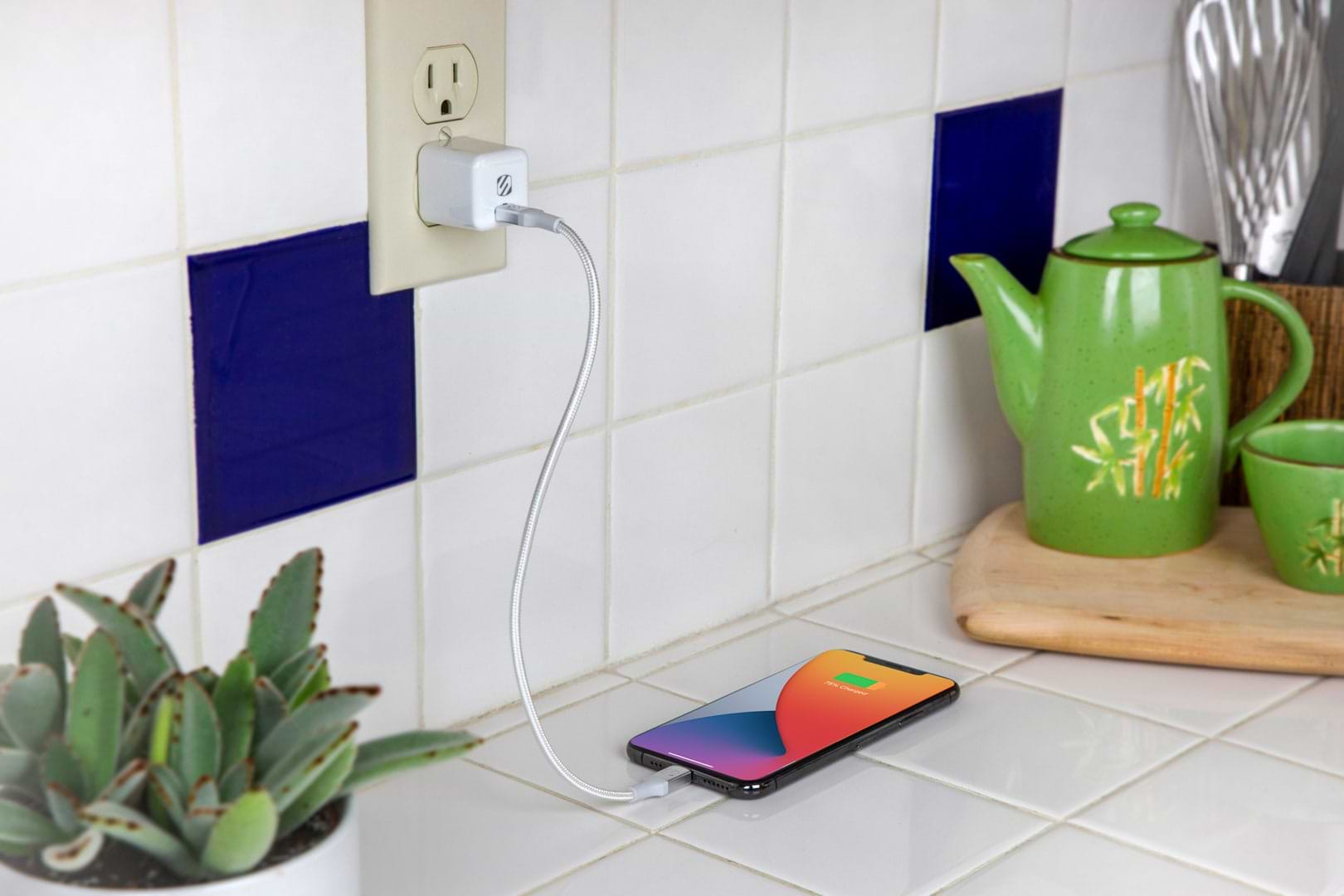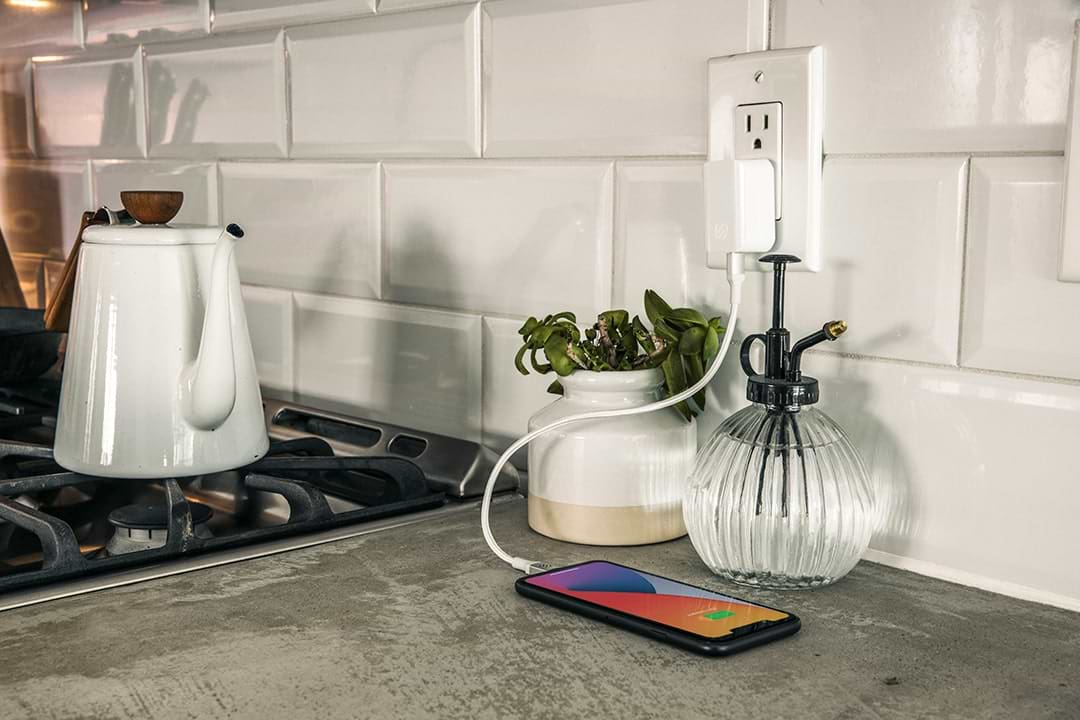Charging iPhone When Off: Facts & Considerations

In our tech-dependent lives, charging our iPhones has become as routine as brushing our teeth. We plug it in, wait for it to charge, and go about our day. But have you ever wondered what happens when you charge your iPhone when it's turned off?
In this article, we will explore the facts and considerations surrounding this topic, helping you make an informed decision about your iPhone charging habits.
Understanding the iPhone Charging Process
The Role of the Battery
The battery is the lifeblood of your iPhone. It powers every task, from making phone calls to browsing the internet. But to understand how charging works when your iPhone is off, it's essential to comprehend the role of the battery.
Inside your iPhone is a Lithium-ion battery, known for its durability and lightweight nature. This type of battery is commonly used in portable electronic devices due to its high energy density. When your iPhone is in use, the battery provides the necessary power to keep it running smoothly. However, even when your iPhone is turned off, the battery's capacity slowly diminishes over time, especially if it's not charged regularly.
It's important to note that the battery's performance can be affected by various factors, such as temperature, usage patterns, and the overall health of the battery itself. Over time, the battery's ability to hold a charge may decrease, leading to shorter battery life and the need for more frequent charging.
How Charging Works
When you plug your iPhone into a charger, whether it's turned on or off, the charging process begins. Here's what happens:
The charger supplies power to the iPhone. The charger, which is connected to a power source, delivers electrical energy to your iPhone through the charging cable. This energy is essential for the charging process to take place.
The charging circuit in your iPhone manages the power flow. Inside your iPhone, there is a sophisticated charging circuit that regulates the power flow from the charger to the battery. It ensures that the battery receives the appropriate amount of energy and prevents any potential damage that could occur from overcharging.
The battery inside your iPhone absorbs the electrical energy. Once the charging circuit has regulated the power flow, the battery starts absorbing the electrical energy. The Lithium-ion battery chemistry allows it to efficiently store the energy for later use.
The battery transforms the electrical energy into stored chemical energy. As the battery absorbs the electrical energy, it undergoes a chemical reaction that converts the electrical energy into stored chemical energy. This stored energy is what allows your iPhone to function when it's not connected to a charger.
In simple terms, the electrical energy from the charger charges the battery, allowing it to store the energy until you turn your iPhone on again. This process ensures that your iPhone is ready to use whenever you need it, even after being disconnected from a power source.
It's worth mentioning that different charging methods, such as wired charging and wireless charging, follow similar principles. The main difference lies in how the electrical energy is transferred to the battery. Wired charging uses a physical connection between the charger and the iPhone, while wireless charging utilizes electromagnetic induction to transfer energy wirelessly.
Understanding the iPhone charging process can help you make informed decisions about how to optimize your battery life and ensure that your iPhone is always ready for use. By following best practices, such as avoiding extreme temperatures and using genuine Apple chargers, you can maximize the lifespan of your battery and enjoy a reliable charging experience.
The Impact of Charging Your iPhone When Off
Battery Life Considerations
One of the concerns regarding charging an iPhone when it's off is its impact on battery life. While it's true that leaving your iPhone plugged in for extended periods can degrade the battery over time, charging it when it's powered off has minimal impact on battery health.
However, it's important to note that the battery life of an iPhone is influenced by various factors, such as usage patterns, temperature, and the number of charge cycles it has gone through. Charging your iPhone when it's off can help maintain the battery level within the recommended range, ensuring longevity in the long run.
Apple recommends keeping your iPhone's battery between 20% and 80% for optimal performance. By charging your iPhone when it's off, you can ensure that it stays within this range, which can help prevent excessive strain on the battery and extend its overall lifespan.
Moreover, charging your iPhone when it's off can be particularly beneficial if you know you won't be using it for an extended period. For example, if you're going on vacation or won't be using your iPhone for a few days, charging it when it's off can help ensure that it's ready to use when you need it, without draining the battery unnecessarily.
Safety Aspects to Consider
When it comes to safety, charging your iPhone when it's off is generally considered safe. Modern iPhones have built-in safety features that regulate the charging process, preventing overcharging or overheating.
However, it's always essential to use genuine Apple chargers or certified third-party chargers to minimize any potential risks. Cheap knock-off chargers may not meet the necessary safety standards, posing a threat to your device and personal safety.
Additionally, it's important to ensure that the charging cable and power adapter are in good condition. Frayed or damaged cables can pose a safety hazard and may not provide a reliable charge to your iPhone. Regularly inspecting your charging accessories and replacing them if necessary can help maintain a safe charging experience.
Furthermore, it's worth mentioning that charging your iPhone when it's off can also have some indirect safety benefits. By charging your iPhone during periods of inactivity, you reduce the risk of accidentally damaging the device while using it. For example, if you charge your iPhone overnight when you're not using it, you're less likely to drop it or expose it to potential liquid damage.
In conclusion, charging your iPhone when it's off can have several advantages. It can help maintain the battery level within the recommended range, ensuring longevity in the long run. Additionally, it is generally considered safe, thanks to the built-in safety features of modern iPhones. However, it's crucial to use genuine chargers and inspect your charging accessories regularly to ensure a safe and reliable charging experience.


The Pros and Cons of Charging iPhone When Off
Charging an iPhone when it's off has been a topic of debate among iPhone users. While some argue that it can help preserve battery health and reduce energy consumption, others point out potential drawbacks such as delayed notifications and increased wear on the charging port. Let's take a closer look at the advantages and disadvantages of charging an iPhone when it's off.
Advantages of Charging When Off
One of the primary advantages of charging an iPhone when it's off is preserving battery health. When you charge your iPhone while it's powered off, it allows the battery to reach its optimal charge level. This can help promote battery longevity and prevent issues such as reduced battery capacity over time.
In addition to preserving battery health, charging your iPhone when it's off also contributes to energy conservation. By charging your iPhone overnight or during periods of non-use, you prevent unnecessary power consumption. This small step can make a significant impact on reducing your carbon footprint and promoting a more sustainable lifestyle.
Furthermore, charging your iPhone when it's off offers convenience. By plugging in your iPhone overnight, you ensure that it's fully charged and ready for the day ahead. This eliminates the need to worry about running out of battery during the day or scrambling to find a charging outlet when you're on the go.
Potential Drawbacks
While charging an iPhone when it's off has its advantages, there are also potential drawbacks to consider. One of the main concerns is delayed notifications and updates. When your iPhone is powered off, it won't be able to receive real-time notifications or updates. This can be problematic if you rely on your iPhone for important messages or time-sensitive information.
Inconvenience is another potential drawback of charging your iPhone when it's off. If you need to use your iPhone urgently and it's not charged, you may have to wait for it to charge before it becomes usable. This can be frustrating, especially in situations where time is of the essence.
Lastly, frequent charging when your iPhone is powered off may lead to increased wear and tear on the charging port. Plugging and unplugging the charger repeatedly can cause the charging port to become loose or damaged over time. This can result in difficulties when trying to charge your iPhone or even render the charging port unusable.
It's important to weigh the pros and cons before deciding whether to charge your iPhone when it's off. Consider your individual needs and preferences, as well as the potential impact on battery health, energy consumption, and convenience. Ultimately, finding the right balance between charging habits and phone usage is key to maximizing the lifespan and performance of your iPhone.
Tips for Charging Your iPhone Effectively
Best Practices for Battery Health
To ensure your iPhone's battery remains healthy, consider the following tips:
- Avoid extreme temperatures, as they can affect battery performance.
- Avoid constant full discharge and charge cycles.
- Keep your iPhone updated with the latest software, as updates often include battery optimizations.
- If you're storing your iPhone for an extended period, charge it to around 50% before storing it.
Avoiding Common Charging Mistakes
To maximize the effectiveness of charging when your iPhone is off, steer clear of the following pitfalls:
- Use non-Apple-approved chargers, as they can pose safety risks and damage your iPhone.
- Charging your iPhone on a soft surface, can trap heat and affect the charging process.
- Leaving your iPhone plugged in for excessively long periods, can negatively impact battery health.
- Using your iPhone while it's charging, can generate excess heat and slow down the charging process.
Debunking Myths About iPhone Charging
Fact vs Fiction: iPhone Charging Myths
There are numerous myths surrounding iPhone charging. Let's debunk some of the most common ones:
- Myth #1: Charging overnight will damage your iPhone battery.
Reality: Apple devices are designed to stop charging when the battery is full, safeguarding against overcharging. - Myth #2: Closing apps will improve battery life.
Reality: Modern iPhones automatically manage background app activities, so manually closing apps has minimal impact on battery life. - Myth #3: Using off-brand chargers is safe and cost-effective.
Reality: Non-Apple-approved chargers may lack proper safety mechanisms, posing risks to your iPhone and personal safety.
The Truth About Overnight Charging
Contrary to popular belief, charging your iPhone overnight is generally safe and convenient. Apple devices are designed to protect the battery from overcharging, ensuring optimal performance and longevity.
However, if you prefer not to charge your iPhone overnight, charging it when it's off is a practical alternative. It helps maintain the battery level within the optimal range and ensures your iPhone is ready when you need it.
Conclusion
In conclusion, charging your iPhone when it's off is a viable option that helps maintain battery health and promotes energy conservation. With the right charging practices and a genuine Apple charger, you can ensure optimal performance and longevity for your iPhone's battery. Remember to debunk common charging myths and follow the best practices to make the most of your iPhone charging experience.